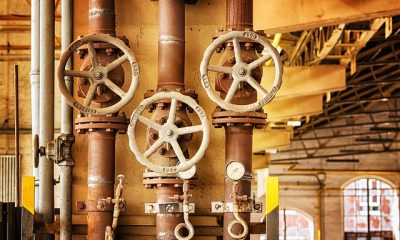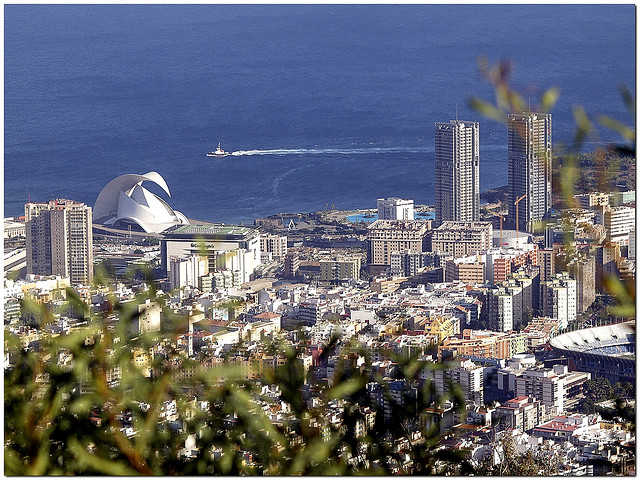Environment
Ten Totally Awesome Ways To Save Water
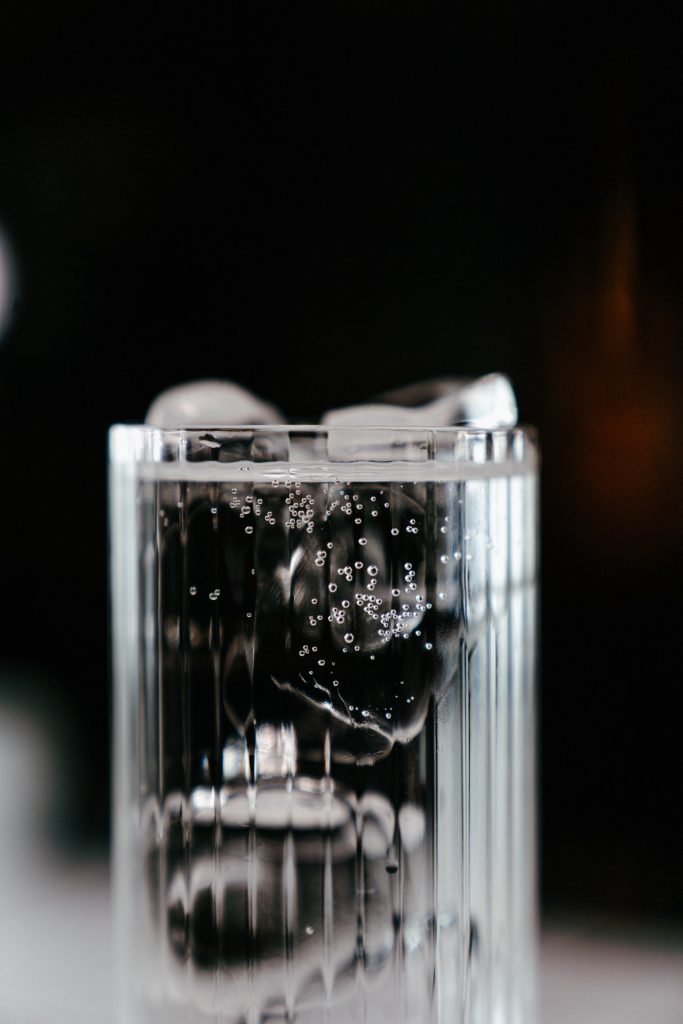
Living on a planet that’s mostly made up of water means that water is our biggest commodity here on Earth. We use it every single day whether we are showering, washing dishes or clothes, watering the garden or even using the toilet. In our homes, we use a lot of water and we rarely think about what we’re using. Most countries using water are fortunate enough not to have to worry about how much they are using each day, while there are other places in the world that do everything that they canfor the tiniest possible drop of water.
In fact, half of the world’s global population doesn’t have access to clean drinking water, so it’s our responsibility to save as much water as possible and not waste it. Water waste depletes one of our biggest resources, and it makes sense to save water – and money – as much as we can. When you are running a home, the amount of water that you use has to be a concern for you as you are paying for the service of clean water piped into your home. Much in the way you wouldn’t stand there switching the light on and off to waste electricity, you need to learn how you can save as much water as possible. So, with that in mind, let’s take a look at ten awesome ways you can do just that.
Switch It Off
Such a simple thing to do, and yet it’s one of the things that people find hardest to do! Leaving faucets running while brushing teeth is not ideal and you can save tanks of water every year by switching the faucet off until you need it again. It’s the same as running the shower for too long when you are waiting for it to warm up and you to get in – give it five seconds and get in! You should also think about limiting the time that you spend in the shower to conserve the water you are running. If you see a water source running, turn it off and you’ll be saving energy, too.
Use Composting For Food
If you have leftover food, don’t throw it down the garbage disposal. The garbage disposal wastes a lot of water and you can save yourself the money and the water waste by throwing the old food scraps on the compost pile and giving the rest to the dog. The garbage disposal relies on water running to break down the food, so you are going to be making a big difference by switching it off.
Wrap Your Pipes
While it’s helpful to purchase slimline water tanks to catch any dripping water, you can save a lot of water by insulating your pipes. In the cooler weather, pipes have a tendency to crack and split, which makes them leak water all over the place. It also takes hot water a lot longer to flow through the pipes because they’re too cold to manage. So, if you insulate your pipes properly, you can prevent these two ways to waste water. By all means, get those water tanks regardless: you could always use new ways to save water!
Repair Cracks
We just mentioned that colder weather can make the pipes crack, and it’s true that this happens easily. Instead of wasting both water and money on this, why not start looking at getting those leaks repaired? It’s not just pipes, either. Leaky garden hoses, faucets, shower heads and broken toilets can all cause leaks in the system. Bring in an expert if you can’t fix it yourself!
Don’t Do Half Measures
Washing the clothes in the house can be time-consuming, but if you’re constantly putting on half-loads of laundry, you are going to waste an awful lot of water. It’s’ not just clothes: half-loads for dishwashers are just as detrimental to the water supply in your home. Wait until the loads are full before you run them, and you’ll be able to save a ton of water.
Embrace Handwashing
Believe it or not, you don’t need to keep the water running when you wash dishes and clothes. You can fill a sink with water and submerge whatever you’re washing in the soapy water. All you need is a plug, and you can make sure that the sink doesn’t drain out while you are washing up. There’s no need to run a whole dishwasher just for one or two items.
Adjust Garden Hoses & Sprinklers
Whether you are working on a commercial garden or on your own, you need to adjust the hoses and sprinklers to ensure that you aren’t wasting any water. Put them all on automatic timers so that you can ensure that they turn off after the right time and not just keep watering! There’s no need to waste more money on watering the garden than necessary
Know Where The Shut-Off Is
Sometimes, you can make all the adjustments in the world and still find a leak in the house. You need to know where the water shut-off switches and valves are so that in the event of a leak that you cannot find or control, you can stop the flow of water. The last thing that you need is a street full of water and a flood threatening your basement. So, work out how to turn off the water and you can save yourself a lot of money and waste at the same time.
Go For Low Maintenance
If your garden is fully lawned and landscaped, you need to look at how you can make it more low maintenance. It’s lovely to have a lot of greenery but if you are going to be risking needing to water the garden almost continuously, then you could swap to artificial grass that doesn’t need your attention as often. There are plenty of plants who don’t use as much water, either. These are the plants you want to have in your garden if you are looking at saving water.
Choose Low-Flow
Low-flow toilets and faucets can help you to save water without even trying. You can even change your showerhead to a slow-flow option and ensure that you are saving water without any of the impact on your daily activities.
Environment
The Future of Fashion: The Rise of Eco-Conscious Brands in the Luxury Market
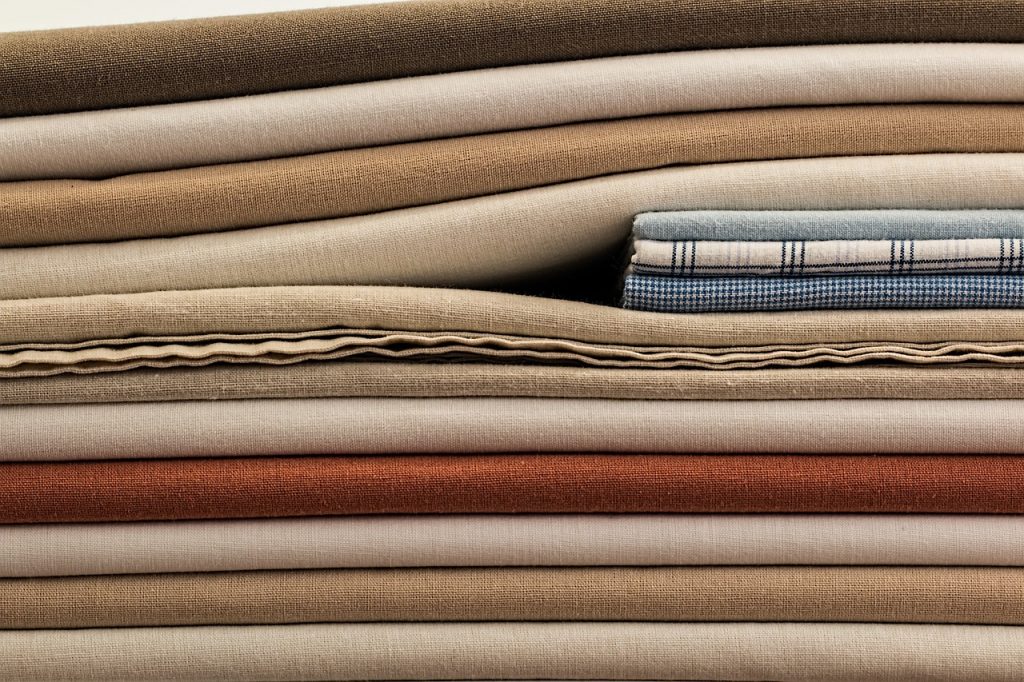
The once opulent and exclusive realm of luxury fashion is undergoing a dramatic transformation. Driven by a growing global consciousness about environmental impact, consumers are demanding more sustainable choices, even at the highest price points. This shift in consumer preferences is reshaping the industry, forcing luxury brands to reevaluate their production processes and material sourcing.
As a result, luxury eco-friendly collections are becoming increasingly sought after, and brands that prioritize sustainability are gaining a competitive edge.
Key Trends Shaping the Market
The luxury fashion market is experiencing a significant shift as sustainability becomes a core value for both brands and consumers. One of the most prominent trends is the rise of eco-friendly fashion that blend high-end design with ethical practices.
These collections are characterized by the use of sustainable materials, such as organic cotton, recycled fabrics, and innovative alternatives to traditional textiles. Brands are also focusing on reducing their environmental impact by adopting eco-friendly production methods, including water-saving technologies and carbon-neutral manufacturing processes.
Brands like Onibai are at the forefront of this movement, offering exquisite designs that not only cater to the aesthetic tastes of discerning customers, but also align with their values of sustainability. As consumers become more aware of the environmental and social implications of their purchases, they are increasingly seeking out brands that offer a blend of luxury and responsibility.
Consumer Demand Driving the Change
Consumer preferences are increasingly dictating the trajectory of the fashion industry. A growing emphasis on sustainability and ethical practices has empowered consumers to demand more from the brands they support. This shift in consumer behavior has led to a surge in demand for luxury eco-friendly products, forcing fashion houses to adapt their business models accordingly. This demand for transparency and ethical practices has compelled luxury brands to rethink their strategies and adopt more sustainable business models.
For example, a recent study by McKinsey & Company found that 66 % of global consumers are willing to pay more for sustainable products. This trend is particularly strong among millennials and Gen Z consumers, who are more likely to be environmentally conscious.
Leading the Way: Eco-Conscious Luxury Brands
Several luxury brands have emerged as leaders in the sustainable fashion movement, setting a precedent for the industry. Onibai, for instance, has distinguished itself with its commitment to sustainability, offering luxury eco-friendly collections that resonate with environmentally conscious consumers.
By prioritizing the use of organic materials, low-impact dyes, and fair labor practices, Onibai exemplifies how luxury can coexist with ethical responsibility.
The Future of Luxury Fashion
The rise of eco-conscious brands in the luxury market marks a significant turning point for the fashion industry. As more brands embrace sustainability, the definition of luxury is evolving to encompass not only quality and craftsmanship but also ethical responsibility. This shift is not just a passing trend; it represents the future of fashion, where consumers and brands alike recognize the importance of preserving our planet while enjoying the finer things in life.
In this new era of luxury fashion, eco-friendly collections like those offered by Onibai are leading the way, proving that sustainability is not a compromise but a new standard of excellence. As the demand for sustainable fashion continues to grow, the future of luxury will undoubtedly be defined by its commitment to eco-consciousness, ensuring that elegance and ethics go hand in hand.
Environment
Redefining marine recycling through painting and sculpture
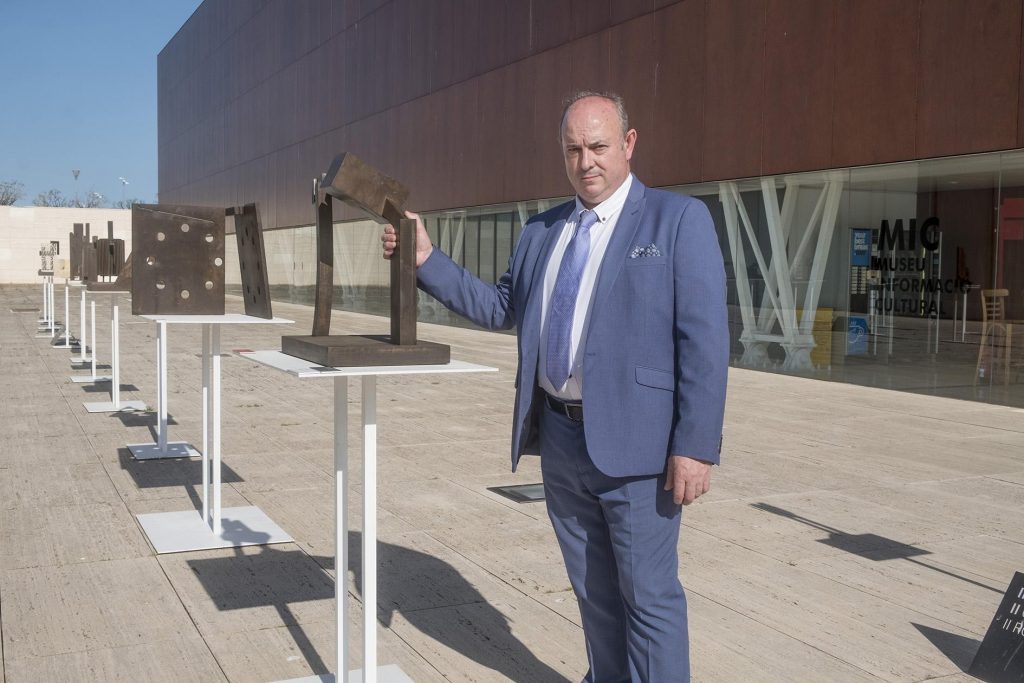
Frutos María Martínez, a self-taught visual artist, has been rescuing waste from the ocean’s waters for decades, turning it into beautiful and elegant artwork. Finishing his first painting and sculpture pieces at just fourteen, Frutos has spent his entire life guided by his passion for art. Becoming a professional artist in the mid-1980s after working at car dealerships, Frutos used his skills and expertise with metal to create sculptures and paintings, inspired by the materials he found along the Mediterranean Coast.
In his pieces, Frutos combines numerous medias to create sculptures, paintings, and collages. As part of his process, María spends time exploring the beaches and waters of Alicante, a Mediterranean city along the southeastern coast of Spain and his home since 1985.
Here, he has found all sorts of materials that have gone on to become pieces in his collections. Steel, iron, wood, nets, and textiles, among other objects, that Frutos salvaged from the ocean can all be found in his art.
By reusing and recycling these found objects, the artist is able to give new life to abandoned and forgotten waste. María recognizes the environmental issues we are facing at a global level, and his art seeks to raise awareness of these challenges. As his materials are pulled straight from the Mediterranean Sea, he is especially invested in taking care of marine life and our oceans. With each item the artist salvages from the ocean, one less piece of waste is polluting the waters.

Once the flotsam is collected, Frutos returns to his workshop where he creates works of art in different forms. While other artists may send their work to be fabricated by others, María could not imagine his pieces being created in a place other than his studio. Here, he uses his innate skills with metal and machinery to forge and construct works of beauty. His sculptures follow hard lines, both straight and curved, and his paintings exude color. When making his collages, he takes his found mixed media and creates new stories. He adds paint to wood that was floating in the sea or combines various materials together, reimagining a life for objects that were once trash.
With a true passion for his work, he creates through intuition. He explains that there is a moment when his art becomes completely emotional and personal, “each piece is imbued with my experiences and emotion, all lumped together, all conveyed by means of materials, technique, design and imagination.” The works his hands awaken and renew are the convergence of his mastery and his spirit, bringing new life to discarded objects.These fascinating pieces have been shown in numerous exhibitions, most recently at the Museum of the University of Alicante. There, the artist presented Acero y pecios del mar (Steel and Sea Wrecks), where two collections were displayed jointly, one offering sculptures focused on steel as a material and the other called Nueva Vida, or New Life, a collection whose pieces were created by recycling materials salvaged from sea wreckage. With this collection, he introduced a new layer into his work, adding an element of chaos and destruction to the backstories of his materials.
An earlier exhibition, Janus, displayed over 40 of Frutos’ sculptures on the University of Alicante’s campus. This exhibit, named for the Roman god of doors, gates and transitions, was influenced by the duality of life, of beginnings and ends, and of old and new. While his finished pieces reflect this duality, the materials used to create them manifest this theme through their first death being revived into new life, a tangible and concrete example of the contrasting polarity he was inspired by.
As with his sculpture-centered exhibitions, his shows highlighting his paintings are full of found materials. Pieces that Frutos creates hang with the weight of rescued and recycled materials, such as rusty iron, steel, and wood. This media has been taken from the ocean and included in his art, conjoining with resin, sands, and paint in bold and striking colors.
Frutos María’s ability to not only find new meaning in recycled and salvaged objects, but to clean up the oceans and make the environment less polluted, translate through his moving pieces of artwork, and because of this, he has made a name for himself in the art world.
Environment
Wind energy, the best way to invest into renewable energies

Over the last few years, wind energy has become the type of energy everyone can not stop talking about. This type of energy brings lots of benefits into the table when compared to more traditional sources of energy, like the energy proceeding from radiation or charcoal. Wind energy is cheap to produce, the most efficient renewable energy, and, most importantly, it is an ecological sensitive alternative.
Why should you invest in wind energy?
Wind energy is the energy of tomorrow. This type of energy made their big appearance during the XX century, when wind turbines would be used to bring energy to areas located far from the electricity grid, such as isolated farms, houses or factories.
During the XXI century, wind energy’s popularity kept on rising. Wind energy is as cheap to produce as traditional sources of energy, like radiation or charcoal burning, while falling into the category of renewable energies. This made wind energy become a top contender in the energy industry.
The wind industry’s future looks to be brighter than ever. The current generation is pretty aware of pollution and the effect it has on climate change. This has caused that governments all around the world start promoting new legislations and campaigns promoting renewable energy and, since wind energy is the most efficient type of renewable energy, it is expected that it will become the main source of energy by 2030. Now is the best moment to jump into the wind energy trend!
Making sure you set up an efficient wind farm
As it has been previously stated, wind energy is definitely an option you should consider if you are looking to power up any of your properties or business. However, setting up a wind farm isn’t a small investment, therefore, before starting this process we need to gather all the information we can about its viability. That is why we can not stop recommending that you consult with professional companies like Vortex FDC.
Vortex FDC is a company that has made a name for itself in the wind industry sector. Vortex assists their customers with all the information regarding wind resource they could need.
For example, an important factor we need to consider before setting our wind farm is the terrain. Not all terrains are appropriate to locate a wind farm, therefore, the terrain would need to be assessed before an installation that could result in a waste of assets if the terrain is not appropriate for it. Vortex FDC helps their customers evaluate where the wind farm is going to be placed, and providing information about the wind to choose the type of turbines that would yield better results in that area. Factors like the type of wind (extreme winds, turbulences, etc) or the temperature need to be taken into account when deciding which type of turbine would be more suitable for our wind farm. For example, if we plan to build a wind farm in an area that gets freezing and snowy in winter, we would need to get a turbine system that is cold resistant.
Vortex FDC runs a numerical weather model to feature all the variables that could affect the production levels of your wind farm, regardless of it being situated off-shore or in-shore. Thanks to their always up-to-date technology, you will be able to avoid unpleasant surprises regarding the energy production of your wind farm.
Overall, opting to use wind energy is an amazing idea that will benefit not only our budget, but also the planet. But, in order to do so, we need to make sure that wind farms are viable, and for that, we need to rely on professionals like Vortex FDC.
-

 Technology12 months ago
Technology12 months agoHow Virtual Fly Elevates the World of Flight Simulators
-
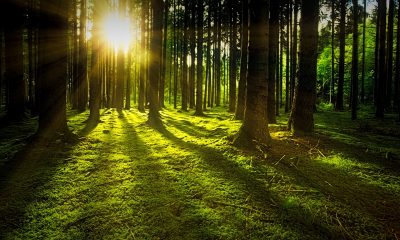
 Travel12 months ago
Travel12 months agoImmerse Yourself in Nature: Explore Forest Bathing with a New Guidebook
-

 Europe12 months ago
Europe12 months agoBarcelona and Athens: cities that will leave an everlasting impression
-

 Health12 months ago
Health12 months agoExperience in clinical quality: What is it, and why is it important?
-

 Travel9 months ago
Travel9 months agoEnjoy a luxury holiday in Zanzibar
-

 Culture and Lifestyle8 months ago
Culture and Lifestyle8 months agoDo you want to surprise a special someone?
-
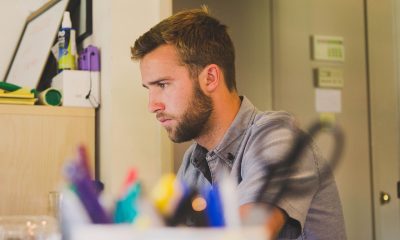
 Business8 months ago
Business8 months agoServiceNow Development Consultancy: Business Process Automation as Disruptive Technology
-

 Environment8 months ago
Environment8 months agoThe Future of Fashion: The Rise of Eco-Conscious Brands in the Luxury Market








